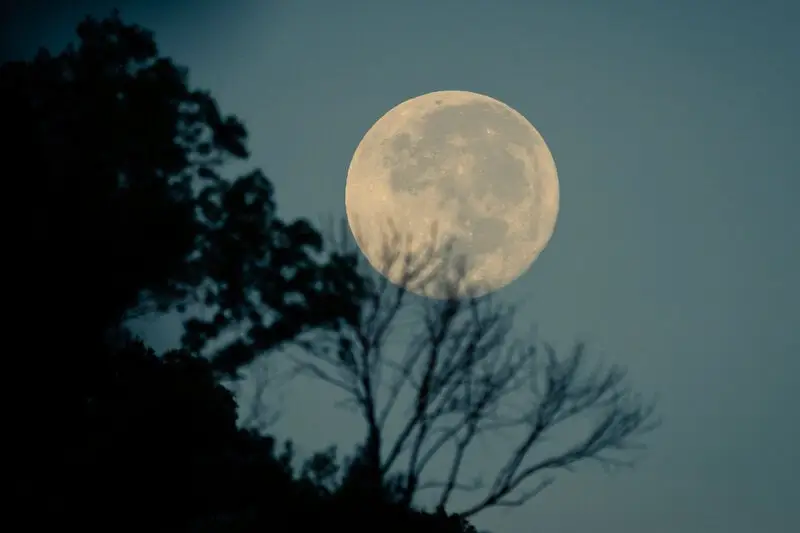“The Moon Is Beautiful, Isn’t It?” is a phrase in Japanese that holds a special significance beyond its literal meaning. Here’s a detailed explanation:
- Meaning: In Japanese, the phrase is “月が綺麗ですね” (tsuki ga kirei desu ne), which literally translates to “The moon is beautiful, isn’t it?”. However, it is often used to indirectly express the sentiment “I love you”. This indirectness is a reflection of Japanese culture, where it is sometimes considered rude to directly state your feelings or needs.
- Origin: The romantic interpretation of this phrase is widely believed to have been popularized by Sōseki Natsume, a renowned Japanese novelist from the Meiji era. The story goes that when Natsume, who was an English teacher at the time, saw his student directly translating “I love you” into Japanese, he supposedly said, “Japanese people never say things like that shamelessly. You’d better translate it as 月が綺麗ですね (‘The moon is beautiful, isn’t it?’) or something”.
- Popularity: The phrase has gained popularity in Japanese literature and pop culture, often being used in manga and anime. It’s a kind of “code” or secret sign of affection. Not all Japanese people know it, but those who do will know what you’re trying to say.
- Responses: There are several ways to respond to this phrase. The most popular response is “Shin demo ii wa” (I can die happy), which is a way of saying “I love you too”. You can also reply with “Sou desu ne” (It’s true, isn’t it?), which hints that you feel the same way, or “Anata mo utsukushii” (So are you) to be more flirtatious.
Despite its popularity, it’s important to note that the poetic meaning of this phrase is recognized only among those who love Japanese slang or trivia. That means, even if you confess your feelings to a Japanese person you like using this phrase, they may not understand your intention.
Origin of the Phrase
The phrase “the moon is beautiful, isn’t it?” is a poetic way of saying “I love you” in Japanese culture. Its origin is uncertain, but it is believed to have emerged from cultural gatherings where people would express their awe at the moon’s beauty, sparking a sense of unity and connection. The Meiji-era novelist Natsume Soseki is often credited with popularizing the phrase, but there is no written proof that he actually used it.
Who is Natsume Soseki?
Natsume Soseki (1867-1916), a prominent Japanese novelist of the Meiji era, is believed to have popularized this phrase. Soseki, who was also an English teacher, felt that the direct translation of “I love you” into Japanese was too blunt and straightforward for the Japanese context. In Japanese culture, especially during that era, direct expressions of personal emotion were not common, and the language often relies on subtlety and implication.
According to popular anecdotes, when Soseki was teaching English, he saw his student directly translating “I love you” into Japanese. He supposedly said, “Japanese people never say things like that shamelessly. You’d better translate it as ‘The moon is beautiful, isn’t it?’ or something”. This phrase captures the Japanese aesthetic of expressing emotions indirectly, through reference to nature and shared experience, rather than through direct statement.
Popularity & cultural significance
The phrase “The moon is beautiful, isn’t it?” is often cited as a classic example of Japanese indirectness and subtlety in communication. It’s meant to express love indirectly, since in Japanese culture it’s sometimes considered rude to directly state your feelings or needs. The phrase is a kind of “code” or secret sign of affection. Not all Japanese people know it, but those who do will know what you’re trying to say
It has become a popular saying in Japanese literature and pop culture, particularly in manga and anime. The phrase is deeply ingrained in Japanese culture, often appearing in literature, poetry, and conversations.
Usage in Manga and Anime
In the realm of manga and anime, this phrase is frequently used to subtly indicate a character’s romantic feelings. When a character looks at the full moon beside their beloved and says, “Tsuki ga kirei desu ne,” it could imply romantic excitement, particularly if the speaker is unsure of the other person’s feelings. A noteworthy example is the title of the romance anime “Tsuki ga Kirei,” which translates to “The Moon is Beautiful”.
This phrase has become a trope, a recurring theme that the audience immediately recognizes and understands. It serves as a secret sign of affection, and those familiar with the phrase will understand the underlying romantic implication.
Examples in Modern Contexts
In modern contexts, the phrase “The moon is beautiful, isn’t it?” continues to be used as an indirect expression of love. It has been adopted in social media, reflecting our digital vernacular and the innate beauty of celestial bodies. Here are some examples of how the phrase is used in different contexts:
- Romantic and Poetic: “Yes, it’s as enchanting as this moment we’re sharing”.
- Playful and Light-hearted: “It is! Almost as beautiful as your smile”.
- In Response to the Phrase: The most popular response is “Shin demo ii wa” (I can die happy), which is a way of saying “I love you too”. You can also reply with “Sou desu ne” (It’s true, isn’t it?), which hints that you feel the same way, or “Anata mo utsukushii” (So are you) to be more flirtatious.
In conclusion, the phrase “The moon is beautiful, isn’t it?” serves as a testament to the subtlety and indirectness characteristic of Japanese communication. Its usage in manga, anime, and modern contexts symbolizes the delicate art of expressing one’s feelings without saying them outright. It continues to resonate in Japanese literature and everyday conversations, symbolizing the delicate art of expressing one’s feelings without saying them outright.
